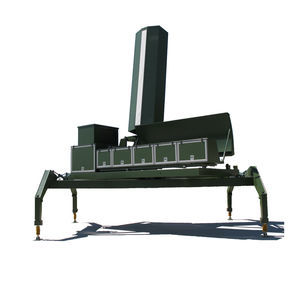
- Components - Spare Parts
- Avionics
- Approach radar
- ELDIS PARDUBICE, S.R.O.
Approach radar PAR-E - FIXEDland-basedfor aircraft
Add to favorites
Compare this product
Characteristics
- Type
- approach
- Location
- land-based
- Applications
- for aircraft
Description
The PAR-E precision approach radar provides important support for the approach and landing control of various aircraft, including the emergency landing due to avionics failure. The radar utilizes an active electronic scanning antennas (AESA) both in the azimuth and the elevation which allows operation without mechanical movement of the antennas. The radar meets relevant ICAO standards and follows the NATO Vision document, according to which the PAR technology will be used at least until 2040.
The PAR-E Precision Approach Radar is designed for target detection such as aircrafts, ground objects and meteorological formations. The detected information is displayed on workplace screens and radar information is transferred to remote ATC workplaces. The radar is particularly important in situations when the pilot has limited sight (because of fog, rain, etc.) and in emergency landing due to avionics failure. In this situation, the radar has to provide the approach controller with maximum quality radar display complemented by computer evaluation of speed, deviations from glide path/course line, the distance from the previously approaching aircraft, etc.
CONFIGURATION
The PAR-E Radar design is fully modular and fully
duplicated radar solution, including the system
of communication with a remote site. The radar construction is fully solid state, including the transmitting circuits. Both azimuth and elevation antennas involve digital T/R modules
ensuring their high reliability.
The PAR-E Radar system involves the BITE
diagnostics to enable fast and accurate
identification of a faulty block of the
radar system.
Catalogs
No catalogs are available for this product.
See all of ELDIS PARDUBICE, S.R.O.‘s catalogsOther ELDIS PARDUBICE, S.R.O. products
PRECISION APPROACH RADARS
*Prices are pre-tax. They exclude delivery charges and customs duties and do not include additional charges for installation or activation options. Prices are indicative only and may vary by country, with changes to the cost of raw materials and exchange rates.


